Your affirmative action program’s proactive outreach efforts must be informed by robust data, and everything you do must be well documented if you are to properly iterate and improve. In this article, Roselle Rogers, formerly Executive Director of DEI Strategy at Affirmity strategic partner Circa (now part of Mitratech) discusses some example reports designed to help you get the most out of your outreach efforts. Crucially, they’ll also demonstrate to stakeholders and the OFCCP alike that your efforts are working.
Across the country, there are countless organizations performing outreach activities as part of their federal contractor obligations. Consequently, it’s worth following existing formulas for how to present the information that will support your AAP. The Circa team has refined its reports to minimize OFCCP requests and provide stakeholders and auditors with everything they need to know in one place. Here are four example reports:
1) VEVRAA – Mandatory ESDS Job Listing Report
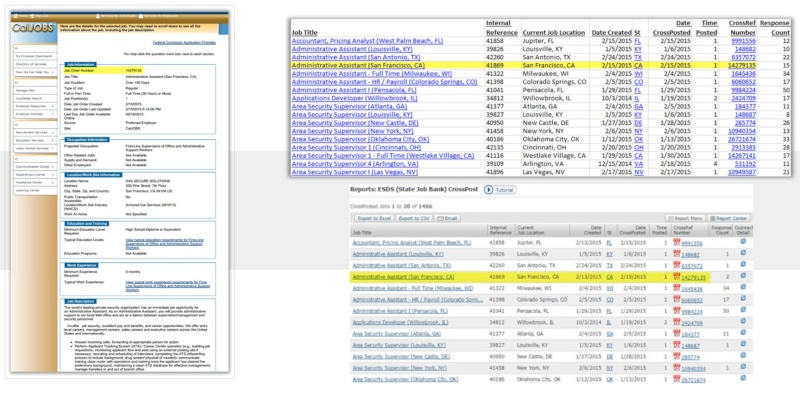
In the example above, Circa has provided a report that it has found effective in getting clients quick approvals for the mandatory Employment Service Delivery System (ESDS) job listing portion of their audit. A key feature is the ability to provide the reporting system with the URL of each job listing on the state job bank, with which the system will archive a snapshot. This leaves little room for doubt that these jobs were posted.
YOU MAY ALSO FIND THIS USEFUL | ‘6 Pay Equity Analysis Software Features That Simplify Your Process’
2) Community and Diversity Outreach
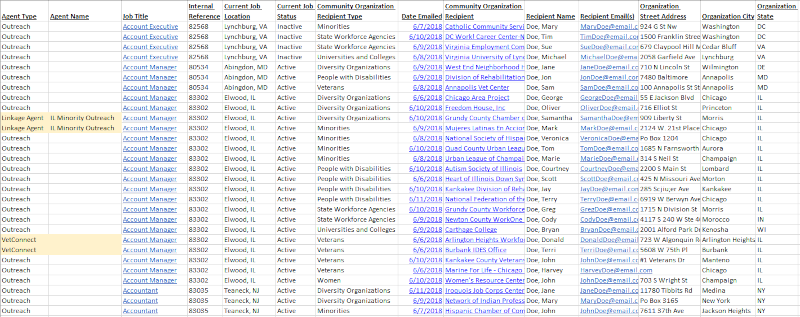
The report above is an example of a per-job list of community organizations outreached to as part of a diversity outreach process. It includes useful information such as the job title, reference, and location, as well as the recipient organization’s name, the date of contact, and the contact details of the main recipient. This helps you to establish a paper trail, and by including recipient email addresses, the OFCCP will be able to follow up and validate your efforts without further back and forth.
3) Outreach Management Activity
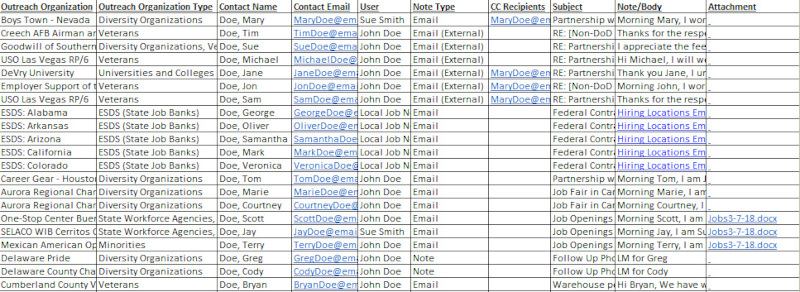
The report above documents your relationship-building efforts with your list of community organizations—remember that sending jobs cannot be the be-all and end-all of your diversity outreach process. This report could record things like when you invited a group to your job fairs or open houses. It also provides a supplementary paper trail that proves you’ve taken steps to make the relationship more multi-faceted and mutually beneficial.
MORE AFFIRMATIVE ACTION ADVICE | ‘4 Important Actions That Will Strengthen Your Affirmative Action Plan Narratives’
4) Candidate Referral Report
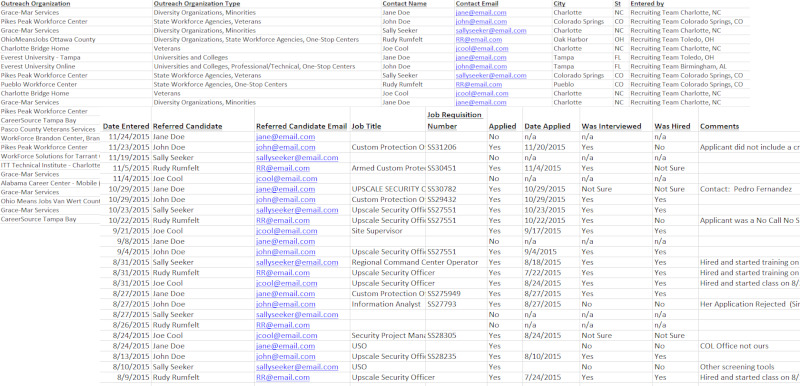
Referrals should also be the subject of a separate report. You should document who referred each candidate, and the identities of the referred candidates. A well-structured report is an invaluable tool when it comes to identifying whether the organizations you work with are actually delivering candidates, and whether you will continue using them year to year. The OFCCP will, of course, be looking to see if you’re making these kinds of evidence-based directional changes.
Make sure that your application process supplements the referral information you collect via automated applicant tracking. For example, you could ask how applicants found out about the job, and/or which type of organization directed them to it. This will help account for applicants that take less direct routes while still helping you keep track of the effectiveness of the organizations you work with.
Continue Reading: Keep Learning About Outreach for Affirmative Action and Beyond
These reporting views are featured in our full guide ‘Outreach for Affirmative Action and Beyond: How to Stay Within Tighter Rules While Improving Outcomes’. Inside, you’ll find a wealth of information about the outreach obligations that federal contractors have under affirmative action, and plenty of helpful pointers for securing a more diverse talent pipeline. Topics additionally covered include:
- An explanation of the role of outreach alongside the other key components of your affirmative action program
- Advice on collecting accurate AAP data (and cleansing what your collect)
- A recap of what you’re obliged to record about your affirmative action program
- A comprehensive list of outreach resources available to federal contractors
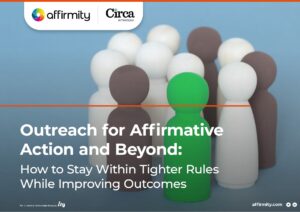
Download the full ebook today.
Ready to start building a better affirmative action program? Contact Affirmity today to explore your options.
 About the Author
About the Author
Roselle Rogers was formerly the Executive Director of DEI Strategy at Circa (now part of Mitratech). Roselle is an accomplished HR executive with over 30 years of practical application.
